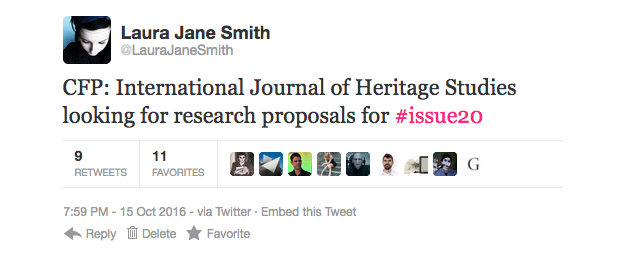“Narratives of the traditional simply being replaced by the modern don’t work when we need to take into account not only possible tradition invention but also self-aware nostalgia, retro-fashioning, alternative traditionalities, memory work, and multiple ways of being modern, some of which involve being traditional in new, or even old, ways.” – Sharon Macdonald
Introduction
Ottawa’s Central Experimental Farm was borne in circumstances not dissimilar to the beginnings of the Public History discipline — as a result of Victorian era interest and advancement in the natural sciences. The national historic site has welcomed visitors since its establishment in 1886, and continues to touch, influence and affect people’s memoryscapes. Although the site’s 427 hectares contains all agricultural and research facility, working farm, botanical gardens, arboretum, and interactive learning museum and more, I will herein refer to it as the Farm.

The Farm’s size and scope allow for a multiplicity of directions for historical investigation, but this research will explore how people who visited the Farm as children remember the site as adults, especially at the Canada Agriculture and Food Museum. Building from Andrew Irving’s experimental methodology “staged fieldwork” as outlined by Macdonald, this research will ask persons who encountered the Farm as children to revisit and relive their experiences in conversation with each other in place.
Research Questions
This research will seek to answer these questions: How do people presently remember and engage with their past childhood experiences at the farm? How have their experiences affected their lives? Which temporality is most prominently represented in events of past-presencing – the past or the present, and why? Do children remember authenticity or an “alternative traditionality” at the Farm?
These questions aspire to unlock “possible modes of experience and telling” that exist when persons act in past-presencing in a unique, socially constructed place such as the Farm. The research hopes to highlight the “creative, not fictive” stories people internalize and relive with others as they interact in place.
Theoretical Evidence
Sharon Macdonald’s idea of past-presencing will be influential in this research. Since the farm’s establishment in 1886 as an agricultural innovation facility for the betterment of national health and prosperity, a modern city has erected and enveloped the surrounding land (and today threatens to encroach deeper). The farm exists not only between times, but belongs in a fascinating multitemporality, where the directions of time intermingle in a negotiated reality.

Science, technology, experimentation and agricultural innovation are very much of the present and for the future. However, heritage buildings, an idyllic arboretum, and the paradoxical existence of a farm within the City of Ottawa suggest the Farm may act as a multitemporal heritagescape, as Walsh described socially constructed places with produced social meaning. Is it possible to separate the modern food science museum exhibit from the cows and calves sitting behind a picket-white fence? Memory Park stands at the centre of the Museum, where a barn housing 59 animals was lost in the 1996 fire, memorializing the past and naming the site as a place of sensitivity.
Other buildings destroyed in previous fires were rebuilt in their heritage style. Is memory “stickier” at sites of trauma such as these? How do memories collide at this site? Do these adults see the Farm differently decades later? What memories remain? Perhaps the answer will never be fully complete, because as Opp and Walsh write, “the production of place is always unfinished and uneven.”
Considering Pierre Nora’s idea of lieux de memoire, this research will investigate how modernity and authenticity at the farm may coexist in a place between times. Nora deserves some explaination: a lieux can be understood as the manifestation of the break between what Nora understands “traditional” or “authentic” memory work and history, the hollow product of the memory crisis in modernity. The controversial theory offers historians interesting ways to conceptualize memory negotiations and past-presencing at the Farm. The Farm is a cleaner, decorated, meticulously crafted place of learning and reminiscing, but it is not a real farm. Therefore the reimagined, synthetic farm can be understood as a lieux de memoire or an alternative traditionality, a picture of pastoral rural times in a technologically innovative, urban setting. Today, the Museum exhibits a modified retelling of past agricultural understandings to nostalgic visitors, young and adult, who yearn for more authentic understanding of the world beyond the food on their plates.
Methodology
This research will employ a version on Andrew Irving’s experimental methodology in his research on HIV/AIDS he calls “staged fieldworld,” as outlined in Macdonald’s chapter on differential ethnographic research methods.
Participants will be briefed on general ideas of the research and asked to reflect on memories, past and present, and place. Participants who visited the Farm as children will voice record their oral histories with a partner without the presence of a researcher as they walk through the site. Participants will supplement their storytelling with pictures with a camera whenever they feel a need to document the image. These performative memories will explore the ways persons interact with the past in the present, how they remember events from their past, and understand the layers of memory and emotion in a place between times.
During my preliminary research I was lucky to come across a woman in a bright red wool sweater who has been working at the Museum for 12 years. She was between appointments giving lessons on pumpkin varieties in a small classroom connected to the cow barn. In an impromptu interview, she spoke wondrously of first encountering the big sheep as a small girl. She noted how the barn has remained exactly the same, but the sheep no longer seemed like giants when she returned to work at the site decades later. She offered her own opinions and perspectives on reality at the farm without prompting, signalling this research may be welcome among the community.
Ethical concerns and resulting methodological restrictions often “mute” the voices of children in traditional histories. This research aims to understand childhood stories, memories, and understandings in the structure of adult retellings. Few events can resurface childhood remembering like the company of an old friend or a new but fellow nostalgic companion. This past-presencing through conversations at the Farm could open up a version of the world as people once saw it and proffer some insight into the ways persons push and pull on individual and collective narratives to come to an understood reality.
In avoiding the scripted questionnaire with researcher vis-à-vis subject, this methodology intends to repudiate unidirectional historical narratives and bridge the gap between Nora’s bifurcation of memory and history by urging participants to practice in a form of multitemporal memory work.
Dissemination of Research
The research will be disseminated to the wider community in podcasts, gathered from the audio recordings during research, edited by the researcher. It is understood the finished audio documentaries will not be what Nora considers a “raw” or “authentic” form of memory — but in the murky negotiations of reality and identify in past-presencing, when is it ever?
Works Cited
- Lyle Dick, “Public History in Canada: An Introduction,” The Public Historian 31, 1 (2009): 7-14
- Sharon Macdonald, “Telling the Past: The multitemporal challenge,” in Memorylands (2013), 52-78.
- Pierre Nora, “Between Memory and History: Les Lieux de Mémoire”, Representations (1989), 26: 7-24.
- James Opp and John C. Walsh, “Introduction: Local Acts of Placing and Remembering,” from Opp and Walsh, eds., Placing Memory and Remembering Place in Canada (UBC Press, 2010), 3-21
- John C. Walsh, “Becoming a Centre: Public History, Assembly, and State Formation in Canada’s Capital City, 1880-1939,” forthcoming in David Dean, ed., A Companion to Public History (Blackwell, 2017).


